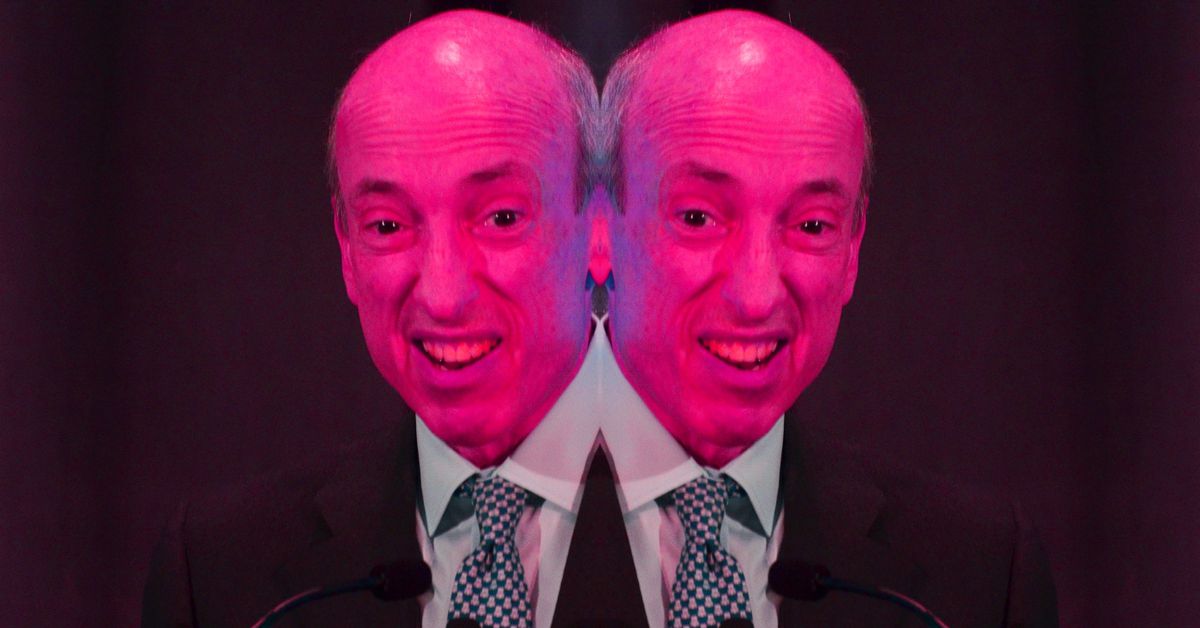Inventory of 7 major protocols to be launched and upgraded
List of 7 Key Protocols Scheduled for Launch and UpgradeAuthor: Ignas
Compiled by: Deep Tide TechFlow
The cryptocurrency market is warming up, and the question is: what should we invest in?
Some tokens, like MUBI, have shown high returns, but they require sharp wit and close attention to community trends in order to invest in a timely manner. However, there are other tokens that can provide higher returns over a longer period of time because they involve developments in Web3 technology innovation. These projects allow us to discover them before the price rises and then invest.
- MEME is popular, why can’t the Bitcoin ecosystem replicate the diverse gameplay of the Ethereum ecosystem?
- Should we go to the Sandbox or jump on the hot trend of Ronin? Should we go both ways or cling on to the thigh?
- When Social Media Becomes a Battlefield: The Control Game and the Battle for Free Speech
Here is a list of 10 protocols that I am following, which are about to have major launches. I will follow what these projects are about to release and explain why I am interested.
1. Frax V3 and Fraxchain
In the rankings of non-profit stablecoin rating agencies, Frax has been rated as level D (unsafe).
According to the report, the insecurity of Frax is due to the risk of fluctuating FXS token collaterals, excessive reliance on centralized assets (USDC), and significant control by the core team over voting rights and monetary policy.
Like DAI, FRAX also lost its USD peg during the decoupling from USDC, but currently, Frax has achieved the transition through v3.
Frax v3 is being gradually released, and sFRAX is already online. The annualized yield of sFRAX attempts to track the interest rate of the deposit reserve balance (IORB) of the Federal Reserve using the IORB oracle. It can essentially be called the “risk-free rate” on the chain.
The current annualized yield is 5.4%, with approximately 22 million FRAX collaterals.

With the launch of Frax v3, FRAX is moving away from algorithmic stablecoins and transitioning to 100% collateralized. FRAX will be pegged to the US dollar through Chainlink oracles and governance approval.
Next is the launch of BAMM (Borrowing AMM). Curve founder Michael referred to Frax’s BAMM as the “biggest innovation in the DeFi space since crvUSD.”
BAMM allows users to leverage any token without an oracle. It operates within its ecosystem, managing asset prices and liquidity internally to prevent defaults and ensure solvency. BAMM allows for efficient capital utilization and increases demand for FRAX. Please refer to this post for more details.
To be honest, I still don’t quite understand how it works, so I hope to delve deeper when more details come out.
There are also FXBs, which are debt utility tokens that can be converted to Frax after a certain period of time. You can purchase FXBs at a discount and then convert them to Frax for low-risk profits.
Interestingly, Frax and Maker started from different points, but both are shifting from USDC to embracing RWA. RWA allows protocols to move away from leverage-based stablecoin circulation demand and provide more predictable returns.
Another similarity between the two protocols (Frax and Maker) is that they are both launching their own native blockchain chains.
MakerDAO is exploring forking Solana, but Frax is building a hybrid OP and zk Rollup and will use frxETH as the Gas token (although potentially all Frax stablecoins will be supported). I applaud Frax for its innovative decentralization initiatives, which sets Fraxchain apart from other L2 solutions. Fraxchain is already on the testnet, and you can try out its tutorial on the Frax Telegram.
Why am I bullish on this project?
Frax is building a high-quality blockchain ecosystem, and with more upgrades and technological innovations, the veFXS token will also increase in value.
These developments take time, so I believe that the current market price (FXS market cap of $647 million) has not yet been affected by the upcoming RWA+L2+BAMM upgrade. After these events are expected, the price might rise.

sFRAX is already live, Fraxchain is on the testnet, and BAMM/frxETH v2 code is currently in progress and expected to be completed within 2-4 months.
2. Synthetix Andromeda Upgrade and Eliminating SNX Inflation
Synthetix is gradually upgrading to V3 to address multiple pain points, but two pain points stand out to me:
Multi-collateral pricing: V3 is unrelated to collateral and allows support for any collateral to back synthetic assets. V2 only allows the use of SNX. This will increase the liquidity of sUSD and the markets supported by Synthetix.
Synthetix lending: Users can now provide collateral to generate sUSD without assuming debt pool risk or paying any interest or issuance fees.
The upcoming Andromeda release this month includes launching Core V3 and Perps V3 Base, using the dollar as collateral.

Previously, Synthetix relied on sUSD, but with the addition of USDC, it should attract more users and LPs. However, USDC is used for frontend integration, and Synthetix wraps it into sUSD for the backend Synthetix contracts.
Andromeda is an exclusive product of Base and an important upcoming upgrade as it will test the demand for USDC as collateral, LP earnings, and generated fees/trading volume.
Multiple Synthetix ecosystem protocols, such as Polynomial, Kwenta, Infinex, and dHEDGE, have confirmed deployment on Base, so Coinbase L2 will have more action.
Why am I bullish on this project?
Synthetix DAO voted to use 50% of the fees earned on Base for SNX buybacks and burns, so if the fees are high, it will bring upward pressure on SNX.
More importantly, the founder of Synthetix has proposed to end the inflation of the SNX token.
Initially, inflation was used to incentivize subscription and increase liquidity, but over time, its effects have become less and less effective. The proposal suggests that stopping inflation and making SNX deflationary would be more in line with the future development of the network, including potential new developments and major collateral transformations.
Therefore, the Base deployment is an important test for SNX, and I will closely monitor the trading volume and the proposals put forward by the project party to eliminate inflation.
3. Fluid in Instadapp
I have high hopes for the Instadapp ecosystem.
The team has already launched multiple products such as Instadapp Pro, Lite, and Avocado, but the most important product is about to be released.
Instadapp combines the advantages of Uniswap, Maker, Compound, Aave, and Curve, and is changing the way Fluid is borrowed and traded.
Below is a topic I posted on Twitter about Fluid, followed by a brief overview of the main innovations.

Borrowers can borrow ETH with up to 95% LTV and reduce liquidation penalties to 0.1%
Partial liquidation only liquidates the amount needed to restore health
The liquidity layer integrates the liquidity of all protocols, so users do not need to remove liquidity with each upgrade
Smart debt and smart collateral, profit from your collateral or reduce debt from generated transaction fees. Traders can now trade on top of your debt instead of increasing your debt through fees, and the debt will decrease.
Another DeFi Made Here blog post explains why he believes “Fluid is the biggest innovation in the DeFi space since the transition from Uni v2 to Uni v3”.

Why am I bullish on this project?
Obviously, as an ambassador for Instadapp, I have personal biases. But we cannot ignore the significant innovations of Fluid. With Fluid (and Avocado), Instadapp will transition from a “middleware” protocol (an aggregator of other DeFi protocols), and the role of the INST token will also be strengthened.
INST will manage Fluid in a similar way to other lending protocols like Aave.
Fluid is expected to launch in mid-December, with hackers able to earn a reward of 500,000 and it will be released to the public in mid-January.
4. Eigenlayer + LRT
If you’re my loyal reader, you’ll know why I’m bullish on Eigenlayer, but now we have a more detailed timeline.
Eigenlayer has launched the second phase of the test network, providing Restakers like you the opportunity to authorize operators.

These operators will verify Actively Validated Services (AVS), which is also the basis for my optimism about the LRT (Liquid Reserve Token).
Currently, EigenDA is the first and only AVS. Rollups can integrate EigenDA to increase throughput.
With the emergence of new AVS, we will witness the expansion of Ethereum’s shared security use cases. Here are a few examples:
Ethos: Ethereum’s reboot hub for Cosmos
Witness Chain: Diligent proof defenses and physical decentralized location proofs
Hyperlane: Inter-Chain Messaging (bridging) for Rollup issuance
Espresso Systems: Decentralized sorter for Rollup transactions
Blockless: Infrastructure for network-neutral applications (nnApps) that can run on any L1/L2 blockchain network without being limited to a specific blockchain.
Multiple AVS will launch their own tokens to incentivize operators and Restakers to delegate ETH to them.
However, things get complicated when deciding which AVS to support. As a Restaker, you need to choose an operator to validate the AVS.

Currently, there are 107 operators on the testnet, and more are expected to join. So how do you choose the operator with the highest risk-reward ratio?
This is where the Liquid Reserve Token (LRT) comes in handy. Instead of directly betting through Eigenlayer, you can deposit funds into the LRT protocol. However, LRT still requires governing entities to select operators and manage risks. This means new protocol tokens will be airdropped and earn higher returns.
With LRT, we can expect Ethereum staking rewards (5% returns), Eigenlayer staking rewards for AVS (10% returns), and LRT protocol token emissions (10%+ returns). Excluding initial airdrops, the annual yield of ETH is approximately 25%.
It is still too early to determine which LRT protocol will prevail, but Ether.fi seems to be the leading protocol.
Why am I bullish on this project?
Restaking + LRT narrative, because it has three key elements that I look for in exploring projects: 1) Innovative technology 2) Token minting opportunities 3) Engaging narrative.
I believe that restaking and implementing LRT will make ETH an attractive asset worth buying and holding. This, in turn, will allow ETH to catch up with BTC and altcoins. However, this is not a risk-free return!
Unfortunately, we still have to wait. Phase 2 of the mainnet will be launched in the first half of 2024, and Phase 3 will be launched later in 2024, when there will be more AVS (real fun begins).
5. Uniswap V4
Uniswap V4 introduces “singleton” contracts that consolidate all liquidity pools within one framework, reducing the gas cost of creating pools by 99% and making multi-pool swaps cheaper.
In fact, you can already experience the benefits of “singleton” contracts through Ambient Finance. I’m always amazed at the low gas fees.
The reason Uniswap v4 made the list is “Hooks,” which make Uniswap v4 more like a platform.
Hooks in Uniswap V4 are essentially programmable contracts that can act at different stages of the liquidity pool’s lifecycle. These Hooks can be seen as “plugins” that allow custom code execution when critical events occur in the pool. This may include on-chain limit orders, time-weighted average market-making, depositing liquidity beyond the range into lending protocols, automatically compounding LP fees into LP positions, and other events.
In fact, Instadapp has already teased a liquidation protocol with zero liquidation fines using v4 Hooks.
Why am I bullish on this project?
Uniswap using V4 Hooks will become the liquidity hub of DeFi, even stronger than it is now. Keep in mind that protocols often face liquidity issues upon launch, but with Hooks, developers can use Uniswap as liquidity to experiment and launch their own protocols + new tokens.
This, in turn, will bring more liquidity to Uniswap, potentially attracting liquidity from other DEXs.
Since V4 will be launched under a commercial license, forking will not be allowed until 2027. With multiple dApps launching on Uniswap, it may gain more market share. Hopefully, the Uniswap DAO and builder community find ways to allocate value to UNI token holders.
But we have to wait until the first quarter of 2025 for the Cancun Ethereum upgrade (including EIP-1153): Transient Storage, which is crucial for reducing network costs for Uniswap v4.
Perhaps betting on UNI during the Cancun upgrade period is a good short-term strategy.
For more information, click here.
6. Stacks Satoshi Upgrade
My view on Stacks is simple, and I recently shared it on X.
The Stacks ecosystem token has performed well, primarily due to three major innovations:
- Stacks Nakamoto Release: Will reduce txs speed from current 10m-30m to ~5s
- sBTC: Non-custodial, trust-minimized BTC-USD peg, allowing smart contracts to write back to Bitcoin
- Growth of BTCfi: Ordinals, BRC20, etc.
Stacks is expected to launch an upgraded version in the first quarter of 2024.
The biggest beneficiary may be Alex Lab, the liquidity center for Stacks DeFi, providing BRC20 order book trading, bridging between BTC and BRC20, as well as EVM chains.
Why am I bullish on this project?
If you’ve read my previous article on the three factors of a thriving cryptocurrency ecosystem, you’ll find that Stacks meets all three criteria because user attention and funds are concentrated on a few assets, with more tokens set to be released.
The three factors of a thriving cryptocurrency ecosystem:
- Technological innovation
- Token minting opportunities
- Engaging narrative
Bringing transaction speed down to 5s and bringing BTC liquidity, combined with the narrative of BTCfi, makes me quite optimistic about the future of Stacks.
In addition, compared to its unique value proposition, the price of Stacks MC is relatively low, but Alex Lab is like a leveraged bet on STX. The Q1 2025 upgrade is also on the way.
7. Growth of Single-Layer L1: Fantom 2.0 Upgrade and SEI V2
Let me explain why FTM and SEI are put together. There are two reasons:
First, modular and single-layer expansion approaches are one of the most interesting narratives in this bull market. More and more people are disappointed with scaling Ethereum through L2 solutions.
Issues include compromises on decentralization, security, and worse user experience, as well as the method of using L2 (Blast) for airdrop distribution.
In addition, L2 tokens lack value proposition for investors. Recently, ARB “staking” from the Treasury Fund demonstrated the limitations of L2 DAO’s creativity in terms of token economics.
With improvements in security and network congestion, the future may be better, and token economics will also improve with true native decentralization of L2 and the potential for income sharing.
But at this stage, even with L2, transaction fees are too expensive for lower transaction amounts. We need L3 or L4 solutions.
However, these technological transformations may not occur in this bull market. If we want maximum security, we will ultimately pay high Gas fees on Ethereum, or we will have to rotate funds from one L2 to another L2 through third-party bridging solutions in order to get airdrops, as no one wants to wait 7 days for withdrawals on Optimistic rollup.
Now, single-blockchain also has its own problems. Compromises on decentralization through limited number of nodes or expensive hardware costs are paramount.
But since Ethereum has stopped focusing on or slowing down L1 scaling, can Ethereum’s modular design solve these problems before improving decentralization on the current monolithic blockchain?
This is where the upgrades of Fantom and Fantom Sonic come into play. It brings a throughput of over 2k txs per second and a finality time of 1.1s, without the need for sharding or L2. The team’s goal is to create the next generation of dApps like GameFi.
Why am I bullish on this project?
I am bullish on Ethereum and Solana as well, because they are the main competitors to Ethereum. However, Fantom is pushing for new innovations to benefit from the narrative of scaling without sharding.
Next spring, I hope to see real dApps being built on Fantom. That will be the most important follow-up factor.
And then there’s SEI V2.
I know many people hate it. Some may even struggle to differentiate SEI from SUI or Aptos. But I remain open-minded about SEI (as well as FTM) because it aligns perfectly with my perspective on modular and monolithic development.

You can read all the upgrade details about SEI v2, but the most important ones include:
- Parallelized EVM, which will benefit the development of the dApp ecosystem as developers can redeploy smart contracts from the EVM blockchain onto SEI.
- 390 milliseconds of finality time (already live on the mainnet).
- Theoretical TPS of 12.5k.
Why am I bullish on this project?
In the previous bull market cycle, L1 speed was crucial, but I believe this time we will see a resurgence of the L1 war, just like in the previous cycle.
Like Fantom, SEI is also built for the vision of scaling technology ecosystems, but it currently has the lowest market value among the three, and token unlocking will only begin in the third quarter of 2025.
We will continue to update Blocking; if you have any questions or suggestions, please contact us!
Was this article helpful?
93 out of 132 found this helpful
Related articles
- Unchaining the Unchained The Rebel Miner and the Battle Against Censorship
- Beoble in Three Minutes Socialfi’s New Attempt, a Valuable Web3 Chat System
- Thorchain Over Fourfold Increase Draws Attention, Will the Cross-chain Veteran Revitalize Again?
- Analyzing xPet’s design mechanisms and economic system One step away from a great SocialFi product?
- RWA Compliance Observations Is After-sales Leaseback a Legitimate Good Business?
- Kava 15 Upgrade Focus How Zero Inflation Unlocks New Investment Opportunities in $KAVA
- Crypto for Advisors Unleashing the Power of On-Chain Investment Tools and Vehicles






